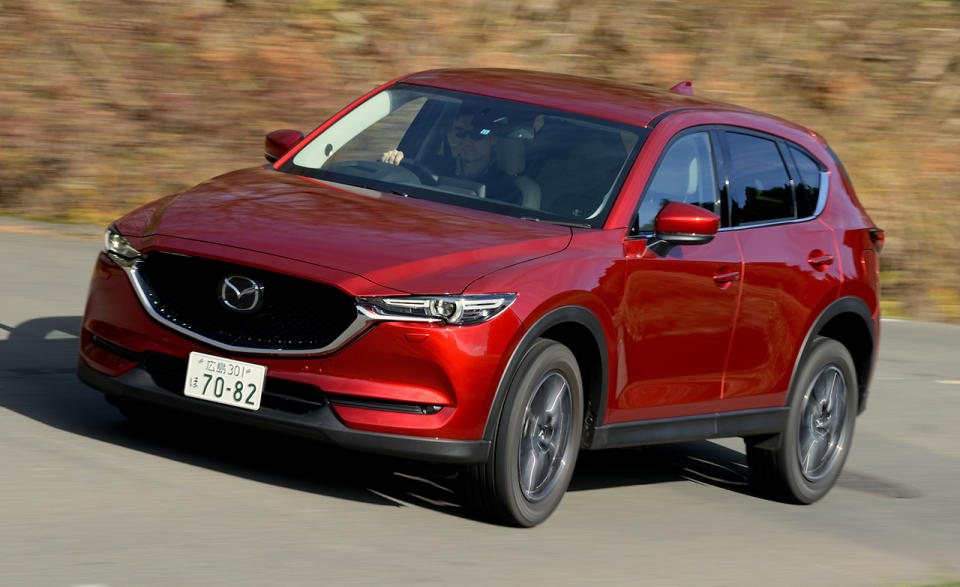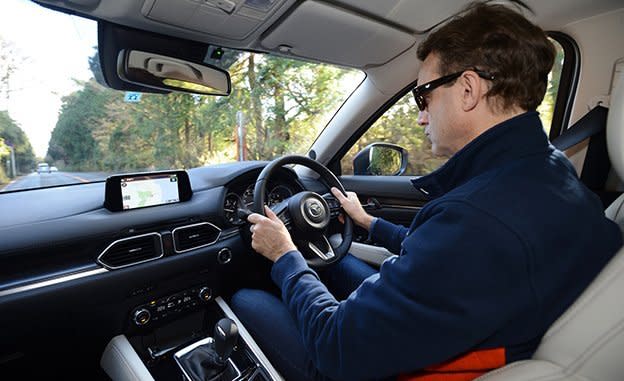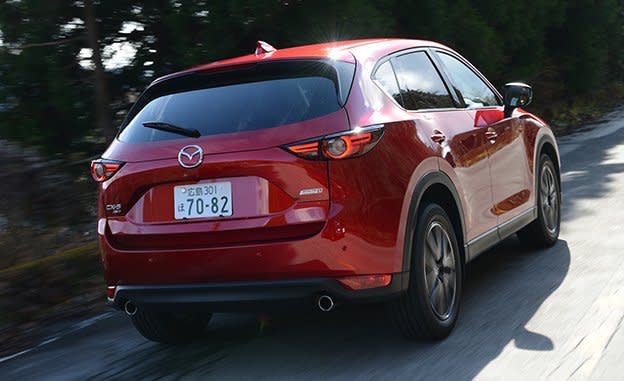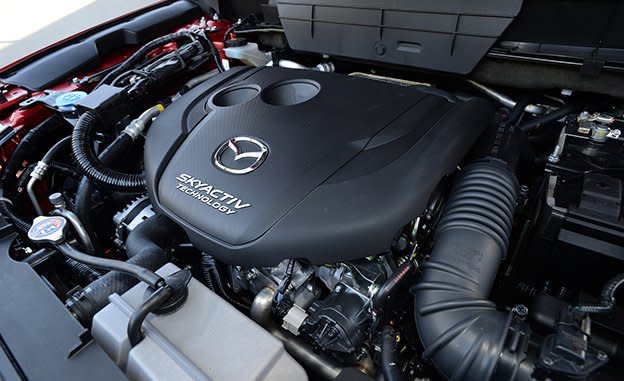2017 Mazda CX-5 Japan-Spec: A First Taste of Mazda's Next-Gen Crossover

Originally introduced for the 2013 model year, the CX-5 was the first Mazda to combine what are now the company’s two signature tag lines: Skyactiv technology and the Kodo design language. But we liked it more for its class-leading fun-to-drive dynamics. Riding the wave of the compact-crossover boom, the CX-5 has become one of the carmaker’s most popular models, accounting for one in four Mazdas sold.
For the CX-5’s second generation, the 2017 iteration takes design cues from the new CX-9 and the Mazda 3 while nearly matching its predecessor’s dimensions. Mazda’s most important crossover gets a large new grille, sleeker headlights, slimmer taillights, and a freshened interior. Beyond the styling, there are significantly reduced NVH, G-Vectoring Control technology for improved steering turn-in, and, depending on the market, a choice of three four-cylinder engines: the revised Skyactiv-G 2.0- and 2.5-liter gas burners and a revamped Skyactiv-D sequentially turbocharged 2.2-liter diesel. In the U.S., we won’t get the 2.0-liter this time, but the diesel finally is coming to America.

New Diesel
We got a first taste of the new CX-5—and the diesel specifically—while driving undisguised prototypes at a Japanese media event near Mount Fuji, about 80 miles southwest of Tokyo. The Japan-market version we sampled “is very close to the U.S.-spec diesel,” according to CX-5 program manager Masaya Kodama.
The powerplant is similar to the diesel available in the previous model in other markets. U.S. specs aren’t finalized, but in its home-market trim the new diesel pumps out 173 horsepower at 4500 rpm and 310 lb-ft of torque at 2000 rpm and is teamed with a six-speed automatic gearbox. Coming out of our first corner, the sharp pickup from low down in the rev range was a pleasant surprise, with the boost coming on at around 2500 rpm and remaining on tap until 4500 rpm. The transmission’s remapped shift schedule also assists in exiting corners faster, and downshifts are quicker, too.
To improve the driving experience, engineers also addressed the typical diesel clatter by dropping “natural sound smoothers” inside the piston pins, says Kodama. The result is somewhat effective in lowering the intensity of the clatter compared with its predecessor, but the diesel sound and vibration definitely are still there.

The CX-5 has always boasted the liveliest chassis in the segment, and the new version enhances the car’s steering response with the addition of what Mazda calls G-Vectoring Control. GVC monitors three parameters: vehicle speed, throttle position, and rate of steering-wheel rotation. The technology momentarily diminishes engine torque in response to some steering inputs. The result is more precise initial turn-in response and fewer midcorner corrections. With extra reinforcement around the A-pillars and more high-tensile steel used in the chassis, the new model’s unibody also has torsional rigidity that’s 16 percent higher, which benefits both handling and ride quality.
Breaking the Waves
Kodama and his team also worked to minimize the noises that penetrate the cabin. They used sound-absorbing materials to target specific unwanted characteristics that Kodama says increase passenger stress. After driving the new and old versions back to back, the new model seemed quieter and more refined.
Inside, the new CX-5 is just as stylish as it is outside. The dash design is simpler and more elegant, its flatter and more horizontal styling making the cabin feel wider and more spacious. The center display screen now perches atop the dashboard, so as to be easier for the driver to view. The seats, one of the few weak points of the outgoing CX-5, now provide better back support, especially in the lumbar area. The new seats support in three primary ways: from directly below, through the upper thighs, and against the shoulder blades. According to Mazda designers, these three focal points improve posture and reduce fatigue, and we found the new seats to be far more comfortable than those in the previous model.

An updated version of Mazda’s i-Activsense safety package includes automatic braking, Driver Attention Alert, radar-based adaptive cruise control, lane-keeping assist, lane-departure warning, blind-spot monitoring, and dynamic LED headlights. For the most part, these systems work as smoothly as they should, although we did experience one instance of overly aggressive braking by the adaptive cruise control.
One thing that shouldn’t change much with the new model is the pricing, with the starting range for the various trims expected to remain at $23,000 to $31,000. The new CX-5 builds on the achievements of its already impressive predecessor by gently evolving the crossover’s styling, driving experience, and interior design and refinement.

 Yahoo Autos
Yahoo Autos 